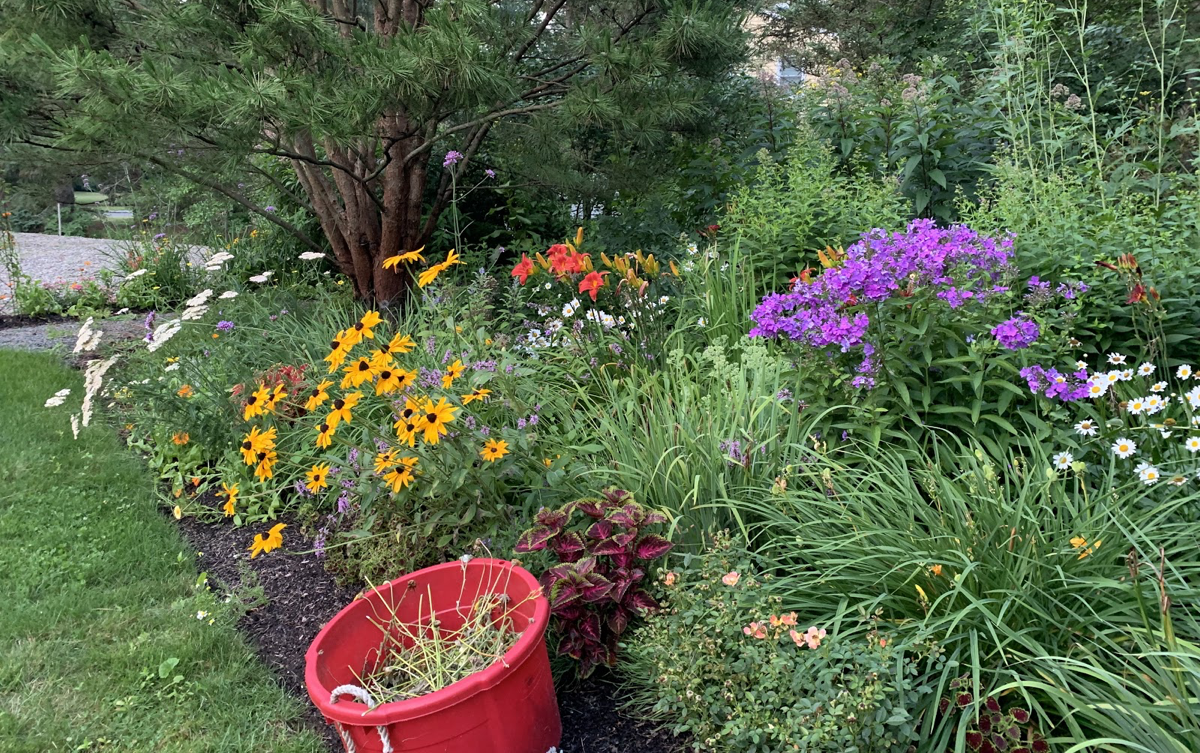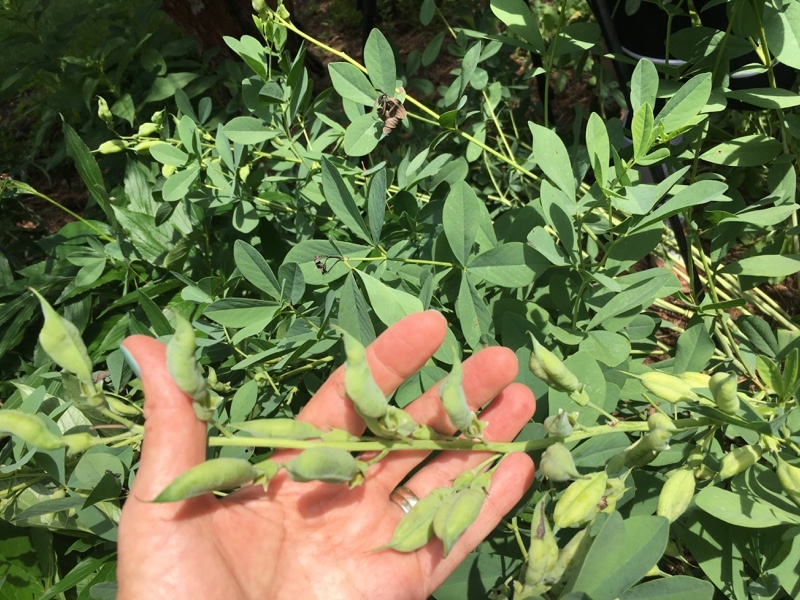After bursting forth in a riot of color and greenery in the spring, our gardens can use a little “freshening” during the summer to keep them looking their best. That means removing the crusty brown flower petals and heavy seed pods that are now weighing down our plants and making our gardens look a little untidy.
Heavy seedpods of this Baptisia australis (Falso Indigo) weigh the foliage down. Simple deadheading allows the foliage to spring back up to shine in the late summer garden.
Deadheading: out with the old to allow for the new
One of the best things you can do for your garden right now is deadhead – that’s removing spent flower blossoms and sometimes entire stems to limit seed production and enable new blooms to grow on plants that can push forth a new set of flowers. Deadheading also enables plants to store more energy in their root systems to support foliage growth and prepare for next year’s blossoms because they aren’t spending that energy producing and ripening their seeds.
To be sure, not all perennials are repeat bloomers, but deadheading is still a valuable and useful practice to neaten up your garden. Perennials that are repeat bloomers, such as daylilies and salvia, will repay you for deadheading with more flowers throughout the season. Even plants that don’t rebloom, such as astilbe and all manner of shrubs may be worth deadheading as a purely aesthetic choice, but that’s up to you. Keep in mind, though, that shrubs are not generally deadheaded because nature’s design is rather perfect in this regard. The spent flowers often just recede into the plant visually, or they form fruits that provide spectacular fall garden interest as well as crucial bird and critter food over the winter months.
While it can be argued that leaving the fruits, seeds, and nuts in a garden are good for wildlife, it is also true that too much of a good thing can overwhelm the ornamental garden. Nature isn’t neat by design, so if your garden is strictly for pollinators, you’re going to have lots bugs and holes in your leaves. If your garden feeds furry critters, then you’ll have the damage that results from their coming and going and nibbling.
Personally, I’m an equal opportunity deadheader. For example, my pollinator garden is a mecca for helpful insects, so I leave much of it alone. I’m perfectly fine with holes in the leaves and the sometimes-scary buzzing that goes on in there.
However, I draw the line at furry critters chewing my gardens to pieces and plants getting flattened by heavy fruits and seed pods, so there are a number of plants that I deadhead, including some perennials such as baptisia.
Many annuals such as zinnias, marguerites, salvias, dalias and petunias benefit from deadheading and fertilizing and will provide a beautiful repeat bloom in response to that kind of attention. Others such as begonias, lobelia, bacopa, and impatiens need far less attention in the deadheading department.
A little knowledge goes a long way.
It’s important to understand that there is no perfect state of status quo in the landscape – all gardens are in flux, constantly growing, evolving, and delighting in different ways. For example, ornamental gardens are seasonal and cyclical. They change from season to season and not every season is a carbon copy of the previous year’s season. Landscapes evolve over time and present a little differently each year.
The goal is to create “seasonality” -- visual interest during each of the four seasons using plant foliage and structure first; then flower, berry or seed; followed by unique fall foliage and bark. The concept of seasonality is especially appropriate for regions like mine (Northeast USA), where seasons are markedly distinct and often dramatically different from one another. This means mixing it up and including lots of plant diversity to create a vibrant, robust landscape, with different colors and textures for different seasons. This is a great way to guard against visual boredom and use the power of diverse horticulture to create a resilience that will help protect your garden against potential damage from insects and disease.

TWEETABLE TIP
Deadheading, like ornamental pruning, is a task that encourages a plant to respond positively when the methods, timing, and conditions are aligned with its growth habit and cycle.
VIA @GardenContinuum

Deadheading is good for your garden – and you
Deadheading, like ornamental pruning, is a task that encourages a plant to respond positively when the methods, timing, and conditions are aligned with its growth habit and cycle. You are effectively training your plant to perform in a way that is most pleasing to your eye and in harmony with the desired composition of the landscape.
Personally, I find deadheading to be one of the most relaxing and satisfying tasks you can undertake in the garden. It’s easy and immediately gratifying. Within minutes your garden plants are neater and fresher-looking.
Deadheading is a passive, almost zen-like activity that you can do with a cup of tea, glass of wine, or even a good podcast. If there’s one activity you can do easily that will benefit both you and your garden, deadheading is it.










Leave a comment